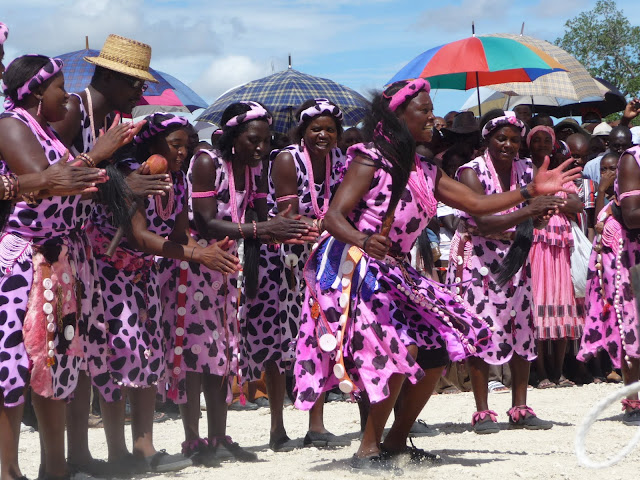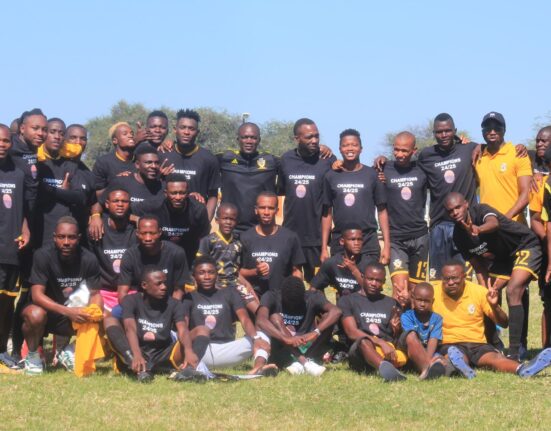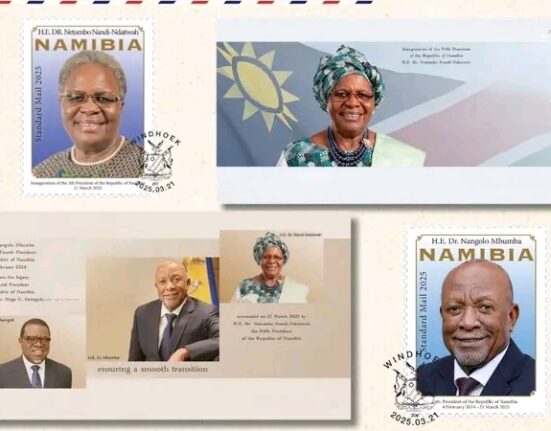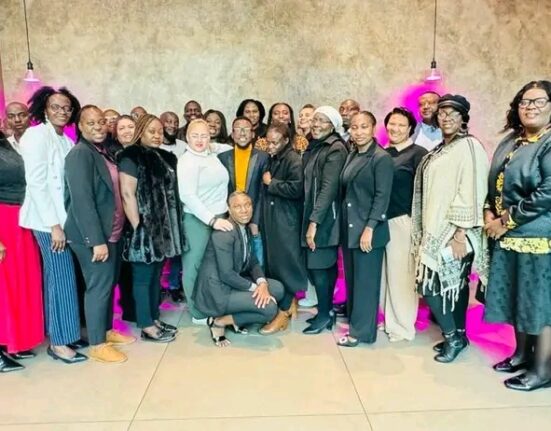The Ovambo Kingdoms of pre-colonial Namibia stand as a testament to the rich cultural and political history of Southern Africa. Before European colonization altered the African landscape, the Ovambo peoples thrived in the northern regions of Namibia, building powerful and sophisticated kingdoms that governed vast territories, established complex social structures, and fostered economic prosperity. This article delves into the history, structure, and legacy of the Ovambo Kingdoms, shedding light on their contributions to the history of Namibia and Africa as a whole.
The Ovambo People: An Introduction
The Ovambo people, often referred to as the Aawambo, are a Bantu-speaking ethnic group that primarily resides in northern Namibia and parts of southern Angola. The Ovambo form the largest ethnic group in Namibia, and their history dates back several centuries before European contact. The name “Ovambo” refers to a collective of several related kingdoms, each with its own leadership, customs, and traditions. These kingdoms included the Uukwambi, Uukolonkadhi, Oukwanyama, Uukwaluudhi, and Ndonga, among others.
The Ovambo people were historically known for their agricultural prowess, skilled craftsmanship, and military strength. Their societies were complex, with intricate systems of governance, trade, and spiritual practices. The Ovambo Kingdoms flourished in an area characterized by a semi-arid climate, but their advanced irrigation techniques, farming practices, and trade networks allowed them to thrive in the region long before colonial influence.
The Political Organization of the Ovambo Kingdoms
The Ovambo Kingdoms were organized into a system of chieftaincies, each led by a king or “Shika ya Pati”, often translated as “chief” or “king.” The leaders of these kingdoms were not only political rulers but also spiritual leaders who played a central role in the governance and daily life of their people. The kingdoms were made up of various clans, and each had its own specific territorial boundaries.
The Role of the King (Shika ya Pati)
The king or Shika was the most powerful figure in the kingdom, wielding authority over both political and religious matters. The kingship was often hereditary, passed down through a royal family line. However, in some cases, it was based on merit or the ability to unite and lead the people. Kings were regarded as the mediators between the human world and the divine, with an essential role in ensuring the prosperity and well-being of their people.
Society and Social Structure
The Ovambo kingdoms were highly stratified societies. At the top of the social hierarchy was the king, followed by chiefs who ruled over specific districts or villages. Below them were the common people, consisting of farmers, herders, artisans, and traders. In Ovambo society, land was considered sacred and was collectively owned by the community. It was the king’s responsibility to allocate land to families and clans for farming and grazing.
The social structure also included ritual specialists, such as spiritual healers and diviners, who played important roles in maintaining order and harmony within the kingdom. These figures were highly respected and often worked closely with the king to ensure the kingdom’s spiritual health.
The Role of Women in Ovambo Society
In the Ovambo Kingdoms, women held an important position within both the family and society. Although men typically held political power, women were influential in the household, farming, and trade. Women’s responsibilities included managing crops, domestic duties, and caring for children. In some cases, women could hold significant power and influence, particularly in times of crisis. Queens and female advisors often had significant roles in diplomacy, rituals, and decision-making, showing that gender roles were more fluid than what colonial narratives later portrayed.
Economic Power of the Ovambo Kingdoms
The Ovambo Kingdoms were highly productive and economically prosperous due to their agricultural practices, which included the cultivation of millet, maize, sorghum, and other crops suited to the region’s dry climate. Irrigation systems, such as waterholes, wells, and carefully managed river channels, allowed the Ovambo to successfully cultivate crops and feed their people despite the arid environment.
Beyond agriculture, the Ovambo engaged in trade both within their kingdoms and with neighboring communities. The kingdoms were linked to other regions of Southern Africa through well-established trade routes. They traded cattle, ivory, iron, salt, and agricultural produce. The Ovambo Kingdoms’ strategic position in the north of Namibia allowed them to maintain strong trade relationships with groups from the neighboring Herero, Damara, and San peoples, as well as with Portuguese traders from Angola.
The kingdom’s agricultural success, combined with the wealth generated from trade, enabled the Ovambo to maintain a strong economy, sustain large populations, and fund military campaigns when needed. This prosperity attracted the attention of European traders, missionaries, and eventually colonial powers.
Military Strength and Conflicts
The Ovambo people were also known for their military capabilities. They formed large, organized armies and were skilled in the use of traditional weapons such as spears and shields, as well as more advanced technology they acquired through trade. The kingdoms often fought with neighboring tribes for territorial control and resources, but the Ovambo were also known for their ability to defend against European encroachment.
One of the most significant conflicts in the history of the Ovambo Kingdoms was the battle against the Portuguese in the late 19th century. The Portuguese, who had been involved in the region through Angola, sought to expand their colonial holdings into Ovambo territory. The Ovambo resisted Portuguese incursions, and their military prowess ensured that the Portuguese never fully colonized the region.
Colonial Encroachment and Decline
The arrival of German colonialists in the late 19th century marked the beginning of a new chapter for the Ovambo Kingdoms. With the establishment of German South West Africa (now Namibia), the Ovambo Kingdoms came under increasing pressure from the colonial powers to submit to foreign rule. Although the Ovambo fought fiercely to maintain their autonomy, they were eventually absorbed into the larger colonial project.
In 1904, the Herero and Nama genocide by the Germans severely impacted Namibia’s indigenous populations. Although the Ovambo were not directly targeted by the Germans, the political and economic power of their kingdoms began to wane. The Germans imposed colonial structures that undermined traditional governance systems, forced the Ovambo to work in mines and farms, and extracted resources from their lands.
Despite the challenges posed by colonialism, the legacy of the Ovambo Kingdoms persisted in the collective memory of the people. Their resistance to foreign rule laid the groundwork for the nationalist movements that would eventually lead to Namibia’s independence in 1990.
Post-Colonial Legacy and Modern Ovambo Culture
After Namibia gained independence, the descendants of the Ovambo people played an integral role in the country’s new government. The SWAPO (South West Africa People’s Organization) party, which became Namibia’s ruling political party, drew much of its support from the Ovambo ethnic group. SWAPO’s rise to power was influenced by the Ovambo Kingdoms’ history of resistance, leadership, and unity in the face of colonial oppression.
Today, the Ovambo people are among the most influential in Namibia, contributing to the country’s politics, culture, and economy. The modern Ovambo population is largely involved in agriculture, trading, and urban development, continuing their historical role as economic powerhouses.
The cultural practices of the Ovambo, such as their traditional dances, crafts, and oral storytelling, continue to be celebrated. Their resilience and resourcefulness in the face of adversity have left an indelible mark on the broader Namibian identity, contributing to the nation’s sense of unity and pride.
The Ovambo Kingdoms of pre-colonial Namibia were not just political entities but thriving, dynamic societies that laid the foundation for Namibia’s modern identity. Their economic, military, and social structures were sophisticated, and their ability to adapt to environmental challenges made them a powerful force in the region. Although colonial powers sought to undermine the kingdoms’ sovereignty, the Ovambo people’s resistance, cultural resilience, and contributions to Namibia’s independence are essential parts of the nation’s history.
By understanding the history and significance of the Ovambo Kingdoms, we not only gain a deeper appreciation for Namibia’s past but also for the perseverance and strength of the people who shaped the country’s future. Today, the Ovambo continue to play a vital role in shaping Namibia’s path forward, ensuring that their historical legacy endures for generations to come.
Join 'Namibia Today' WhatsApp Channel
Get the breaking news in Namibia — direct to your WhatsApp.
CLICK HERE TO JOIN












